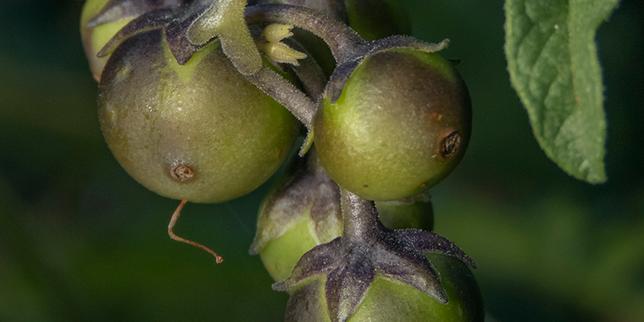

In a fascinating breakthrough for botanical science, an international team of researchers has uncovered compelling evidence that traces the modern potato’s lineage back to a surprising ancestor—the tomato. Published on July 31 in the esteemed biology journal “Cell,” the study reveals that the emergence of tubers in the potato’s ancestor, dating back approximately nine million years, resulted from a hybridization event with a wild tomato plant. This revelation adds a new chapter to our understanding of the evolutionary history of these staple agricultural crops.
The discovery sheds light on the intricate relationships within the Solanaceae family, commonly known as the nightshade family, to which both tomatoes and potatoes belong. Scientists have long been aware that members of this family share common genetic traits, yet this new study highlights a specific evolutionary interchange that led to the divergence of the two plant species we are familiar with today.
Central to this study is the phenomenon of hybridization—an occurrence where two distinct species interbreed, culminating in the exchange of genetic information. In the case of the potato and its tomato relative, this ancient natural event introduced genetic variations that ultimately enabled the formation of tubers, which are the underground storage organs that characterize potatoes. The implications of this discovery extend beyond mere historical curiosity, offering insights into plant adaptation and evolution, as well as potential applications in agricultural biotechnology.
To arrive at their conclusions, researchers conducted a meticulous analysis of genetic material from ancient plant fossils, leveraging advanced sequencing technologies to unravel the complex genomic patterns conserved through millions of years. By comparing the genomes of contemporary potato and tomato species with these ancient sequences, scientists could trace the lineage and identify the moment when hybridization gave rise to tuber-forming potatoes.
The evolutionary significance of tubers cannot be overstated. Not only did they provide a survival advantage by storing nutrients underground—safe from herbivores and variable climatic conditions—but they also laid the groundwork for one of the world’s most important food crops. Today, potatoes are cultivated and consumed globally, playing a critical role in food security and economies, particularly in regions where other crops may struggle to thrive.
While the concept of a potato-tomato connection may seem novel to the general public, it aligns with the broader scientific view of plant evolution. Nature frequently operates through intricate and unexpected pathways, producing the diversity of life forms seen today. This study serves as a reminder of the dynamic and interconnected web of life that binds all organisms—in this case, exemplified by a shared ancestral thread between plants we routinely encounter on our dinner plates.
The implications of these findings are multifaceted, with potential to influence agricultural practices. For instance, understanding the mechanisms behind tuber formation and hybrid vigor can inform the development of more resilient crop varieties. By tapping into ancient genetic knowledge, scientists can advance efforts to breed plants with enhanced nutritional qualities, stress resistance, and adaptability to changing environmental conditions.
As the global community faces challenges such as climate change and population growth, enhancing food production systems becomes imperative. Research like this not only enriches our understanding of the natural world but also equips us with the knowledge to innovate sustainable solutions for future generations.
In conclusion, the study published in “Cell” illuminates a remarkable evolutionary story, wherein a fortuitous hybridization event millions of years ago between a tomato ancestor and another plant lineage resulted in the development of the potato as we know it. Such discoveries remind us of the intricate dance of evolution, where every plant and animal is interconnected in a vast tapestry of shared history, continuing to inspire wonder and reflection on the journeys life takes across the ages.
Source: {link}
